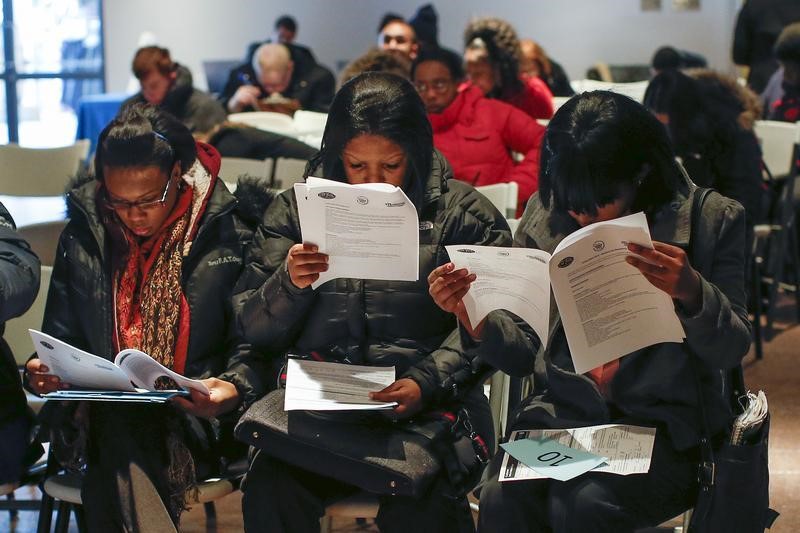By Geoffrey Smith
Investing.com -- The U.S. labor market weakened dramatically in November, as a fresh wave of the coronavirus put the brakes on hiring across the country.
Nonfarm payrolls grew by only 245,000 through the middle of the month, a sharp slowdown from October. October’s job gains were also revised down to 610,000 from an initial estimate of 638,000.
Analysts had expected an increase of 469,000.
The sharp slowdown in hiring is likely to put extra pressure on Congress to agree a fiscal relief package during the 'lame duck' session before the inauguration of Joe Biden in January.
The thought that a weaker-than-expected report could tip Senate Republicans into accepting a bigger stimulus package than the $500 billion proposed by Leader Mitch McConnell helped to support stock futures after the announcement. Dow futures initially spiked higher, but quickly retraced their gains and by 8:55 AM ET (1355 GMT), they were at 30,026 points, some 15 points below where they were immediately before the release.
The net addition of jobs was the smallest in the six months since May, when an unprecedented wave of layoffs followed the first lockdowns of the pandemic. That will reinforce suspicions that the rebound in the economy since May is running out of steam, as millions of Americans lose their entitlement to enhanced unemployment benefits while companies in the worst-hit sectors step up the pace of layoffs. The retail sector notched a decline of 35,000 jobs in the month, the Labor Department said in its report.
Anything below the consensus forecast "would suggest that the best of the jobs market really is behind us," Bank of New York Mellon (NYSE:BK) strategist John Velis wrote ahead of the report.
Private payrolls grew by 344,000, roughly in line with ADP’s estimate early in the week, but government payrolls fell by 99,000. The leisure and hospitality industry, by contrast, added 31,000 jobs.
The unemployment rate fell by more than expected nonetheless, to a post-pandemic low of 6.7%. The so-called U6 jobless rate, which measures under-employment across the economy more broadly, edged down to 12.0% from 12.1%.
Paul Donovan, chief economist with UBS Global Wealth Management, said in a morning note on Friday that the labor market is caught between two contradicting influences. On the one hand, the downturn was not the result of fundamental imbalances, and should therefore be able to rebound quickly to its pre-pandemic state. On the other, the pandemic has accelerated the pace of structural change, meaning that workers in sunset industries and sectors have been forced into unemployment earlier than would otherwise have been the case.
That's resulting in a growing mismatch between supply and demand, as millions of older, middle-skilled professionals lose their jobs without having the necessary skills to take such jobs as are being created. Such factors are also slowly starting to be seen in wage developments, where average earnings are steadily running ahead of inflation. Average hourly earnings growth stayed at 4.4% in November, defying expectations of a slowdown to 4.3%.
